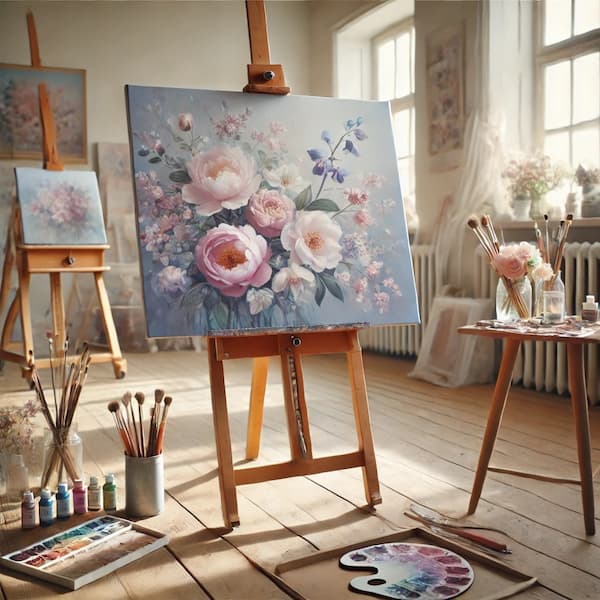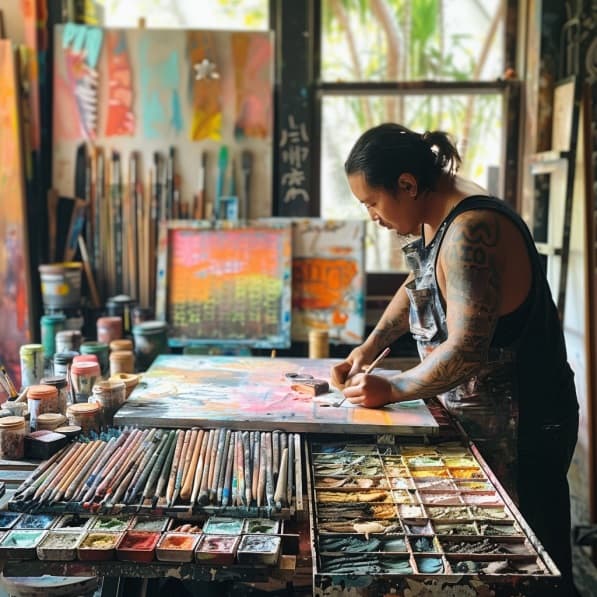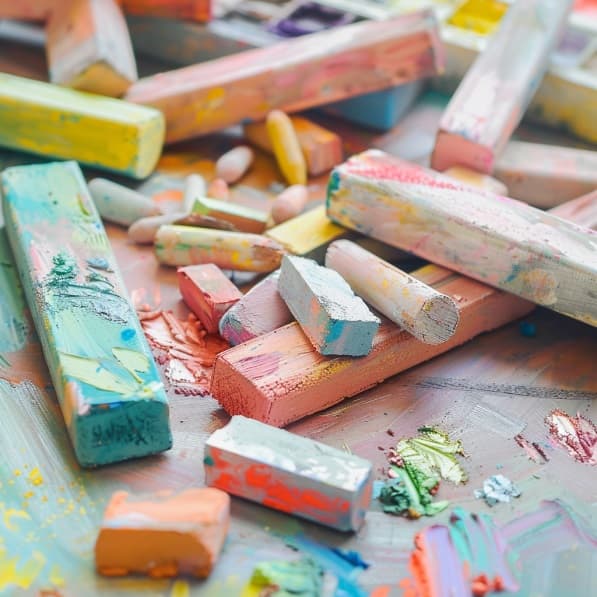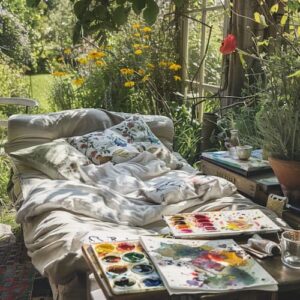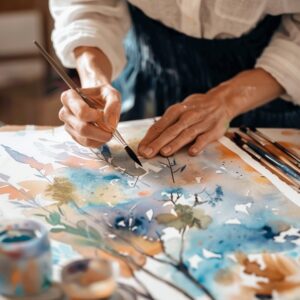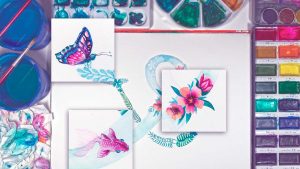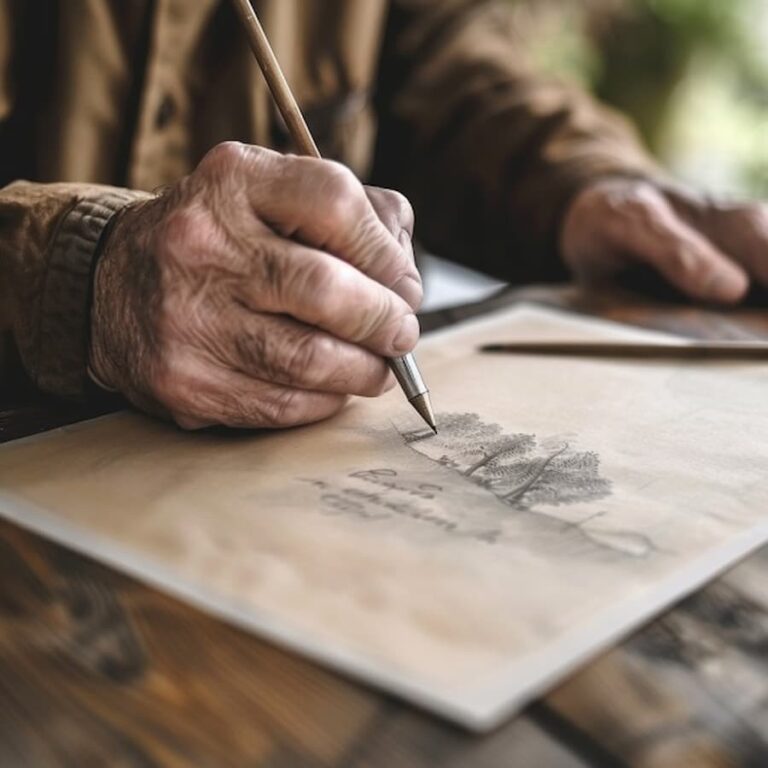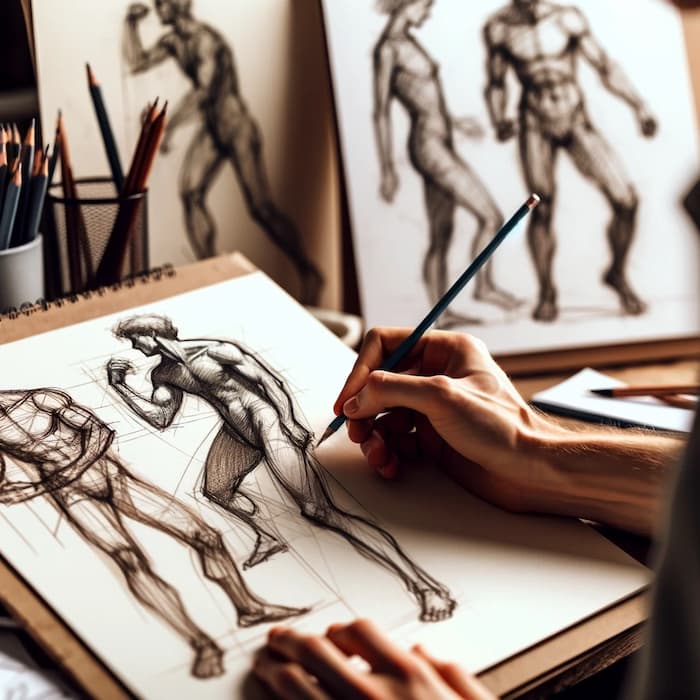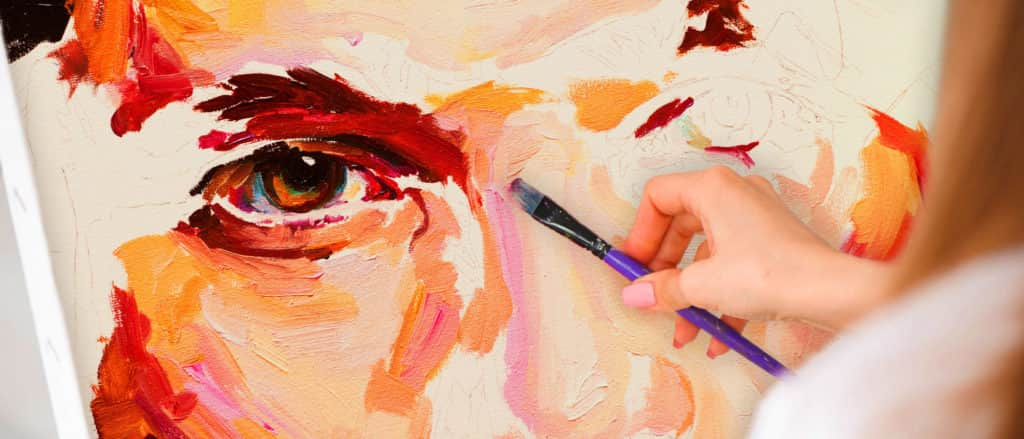Pastel painting is one of the most versatile and expressive artistic techniques.
In this article, we will explore the basics of pastel painting, from the choice of materials to the essential techniques for mastering this art.
Introduction to Pastel Painting
Pastels, known for their vibrant range of colors and textures, offer a unique experience for artists.
Unlike other mediums such as oil or watercolor, pastel combines the qualities of drawing and painting in a compact and accessible form.
But what makes pastel so special?
What are Pasteles?
Pastels are sticks of dry pigment that are mixed with a binder to hold their shape.
There are three main types of pastels:
- Dry Pastels: Include soft and hard pastels.
They are ideal for a wide range of techniques due to their ability to blend and blend easily. - Oil Pastels: Contain oils that give them a creamy texture.
They are perfect for thicker and layered effects. - Pastels in Bars: Combine characteristics of dry pastels and oil pastels, offering a balance between fluidity and texture.
Basic Principles of Pastel Painting
The first step in painting with pastels is to understand how the different types of pastels work and how they can be applied to various surfaces.
Materials Needed and Choice of Cakes
- Soft Pastels: They offer a wide variety of vibrant colors and are easy to blend.
However, their soft texture can be a challenge for beginners. - Hard Pastels: They are ideal for details and fine lines due to their firmer consistency.
- Oil Pastels: Provide a more robust finish and are excellent for layering and texturing.
Papers and Supports
The choice of paper is crucial to the success of a pastel painting.
Textured papers allow for better pigment adhesion.
Some of the most recommended include:
- Canson Mi-Teintes paper: Popular for its texture and variety of colors.
- Sand Paper: Offers a rougher texture, ideal for retaining several layers of cake.
- Pastelmat paper: Combines smoothness and texture, providing a unique surface to work on.
Other Materials
- Fixative: Used to fix the pastel and prevent stains.
- Diffusers or Tortillones: Tools for blurring and mixing colors.
- Gloves and Mask: To protect from cake dust.
Pastel Painting Techniques
Once you have your materials, it’s time to explore basic pastel painting techniques.
- Blurring Technique: Blurring is essential for creating smooth transitions and gradient effects.
You can blend with your fingers, a soft cloth, or a blender.
The key is to apply the pastel in light layers and blend to the desired softness. - Layering: The layering technique allows for depth and texture.
Start with lighter colors and work toward darker colors, applying each layer gently to avoid saturating the paper. - Texture Effects: To create texture, you can use techniques such as scratching or rubbing.
Scratching involves scraping off the top layer of pastel to reveal the color underneath.
Rubbing uses tools such as stiff brushes or spatulas to create patterns on the surface. - Color Blending: Color blending in pastels can be achieved in several ways.
One of the most common is to overlap layers of different colors and blend them.
You can also mix directly on the palette before applying to the paper.
Care and Conservation
Caring for your paints and materials is crucial to maintain their quality over time.
- Fixing the Work: Applying a fixative at the end of your work helps protect the pastel from smudging and wear.
Use spray fixatives in a well-ventilated area and with light coats to prevent colors from bleeding. - Storage: Store your paints in protective folders or frames with glass to avoid direct contact with the surface.
Upright storage is ideal to prevent pastel dust from accumulating. - Material Maintenance: Keep your cakes organized and clean.
You can use a box with compartments and a soft cloth to wipe off dust residue.
Tips and Tricks for Beginners
-Practice Light Hand
Light pressure when applying the pastel allows for smoother layers and better blending possibilities.
Avoid pressing too hard, as this can saturate the paper and make correction difficult.
-Experiment with Textures
Don’t limit yourself to using only your fingers to blend.
Try different tools such as brushes, sponges, and blenders to see how they affect the texture and appearance of the cake.
-Use Color Strategically
Choose complementary colors to create contrast and analogous colors for smooth transitions.
Experiment with color combinations to discover new palettes.
-Learn from the Masters
Look at works by well-known artists who use pastel for inspiration and to learn new techniques.
Looking at how they handle light, color, and texture can offer valuable insights.
-Keep your work area clean.
Cake dust can be harmful if inhaled in large quantities.
Be sure to work in a well-ventilated area and regularly clean your workspace.
Pastel painting offers an exciting opportunity to explore color and texture in a direct and tactile way.
With these basic principles, you’ll be well on your way to mastering this technique and creating vibrant, dynamic works of art.
To learn how to work with pastels like a real professional, knowing all its characteristics, use of materials and how to get the most out of this technique, visit our Painting Course with Lifetime Access + Workshops.
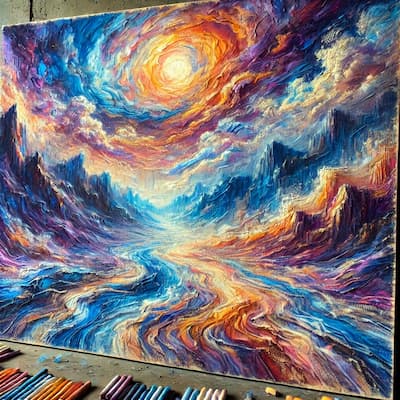
Materiales necesarios para cuadros con óleo pastel
Antes de empezar a trabajar en tus cuadros con óleo pastel, asegúrate de tener los siguientes materiales:
Óleo pasteles
La pieza clave de esta técnica. Es recomendable invertir en pasteles de alta calidad, ya que los de menor calidad suelen tener menos pigmento y pueden ser difíciles de mezclar.
Papel o lienzo adecuado
Para los cuadros con óleo pastel, es fundamental elegir una superficie que soporte bien la textura cremosa. Los papeles de gramaje alto, papeles específicos para pasteles o lienzos texturizados funcionan muy bien.
Esponjas o difuminadores
Si bien puedes mezclar los colores directamente con los dedos, algunas herramientas como difuminadores o esponjas pueden ayudarte a conseguir efectos más controlados en tus cuadros con óleo pastel.
Barniz final
Aunque los óleo pasteles no se secan completamente, aplicar un barniz en spray específico para pasteles ayudará a proteger tu obra de manchas y polvo.
Técnicas esenciales para cuadros con óleo pastel
A continuación, algunas técnicas básicas que te permitirán empezar a dominar la creación de cuadros con óleo pastel.
Aplicación por capas
Los óleo pasteles permiten trabajar por capas. Comienza con colores más claros y añade gradualmente tonos más oscuros. Recuerda que, debido a la consistencia grasa de los pasteles, las capas superiores no se mezclarán fácilmente si se aplican de manera gruesa.
Difuminado
Usa tus dedos, un trapo suave o esponjas para difuminar los colores. El difuminado es una de las características más atractivas de los cuadros con óleo pastel, ya que permite una mezcla fluida de colores sin esfuerzo.
Sgraffito
Una técnica interesante es el sgraffito, que consiste en raspar la capa superior de óleo pastel para revelar los colores subyacentes. Esta técnica es ideal para agregar texturas o detalles finos a tus cuadros con óleo pastel.
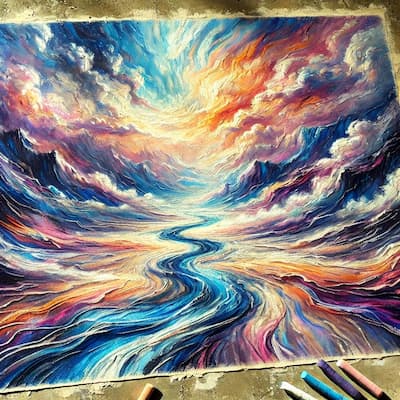
Consejos para mejorar tus cuadros con óleo pastel
Aunque los cuadros con óleo pastel son accesibles, hay algunos consejos que pueden hacer que tu experiencia artística sea aún más gratificante:
Trabaja en capas finas
A menudo, los principiantes aplican demasiado pastel en una sola capa. Para evitar que tu obra se vuelva demasiado gruesa o difícil de trabajar, aplica capas delgadas y construye gradualmente.
Usa un fijador entre capas
Un fijador en spray puede ayudarte a mantener las capas iniciales en su lugar mientras sigues añadiendo detalles y sombras. Esto es especialmente útil en cuadros con óleo pastel con muchos detalles.
Mantén tus pasteles limpios
Durante el proceso de creación, los óleo pasteles pueden acumular pigmentos de otros colores. Para mantener la pureza de los colores en tus cuadros con óleo pastel, límpialos regularmente con un trapo seco.
Inspiración y ejemplos de cuadros con óleo pastel
Si estás buscando inspiración para tus propios cuadros con óleo pastel, te recomendamos estudiar el trabajo de algunos artistas contemporáneos que han dominado esta técnica. Los paisajes vibrantes, los retratos llenos de vida y las obras abstractas son ejemplos comunes donde los óleo pasteles brillan por su riqueza y profundidad.
Conclusión: Los cuadros con óleo pastel como una técnica versátil y creativa
En resumen, los cuadros con óleo pastel ofrecen una combinación perfecta de color, textura y flexibilidad. Desde los principiantes hasta los artistas avanzados, cualquiera puede beneficiarse de la simplicidad de uso de los óleo pasteles y la capacidad de crear obras de arte impactantes.
Para aprender a trabajar con pastel como un auténtico profesional, conociendo todas sus características, uso de materiales y cómo sacarle el máximo partido a esta técnica, visita nuestro Curso de Pintura con Acceso Vitalicio + Talleres.

